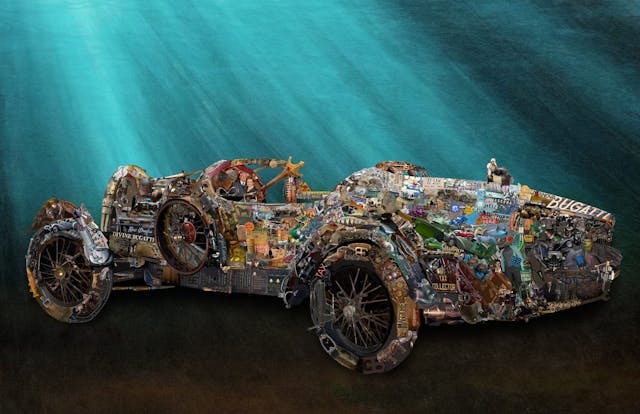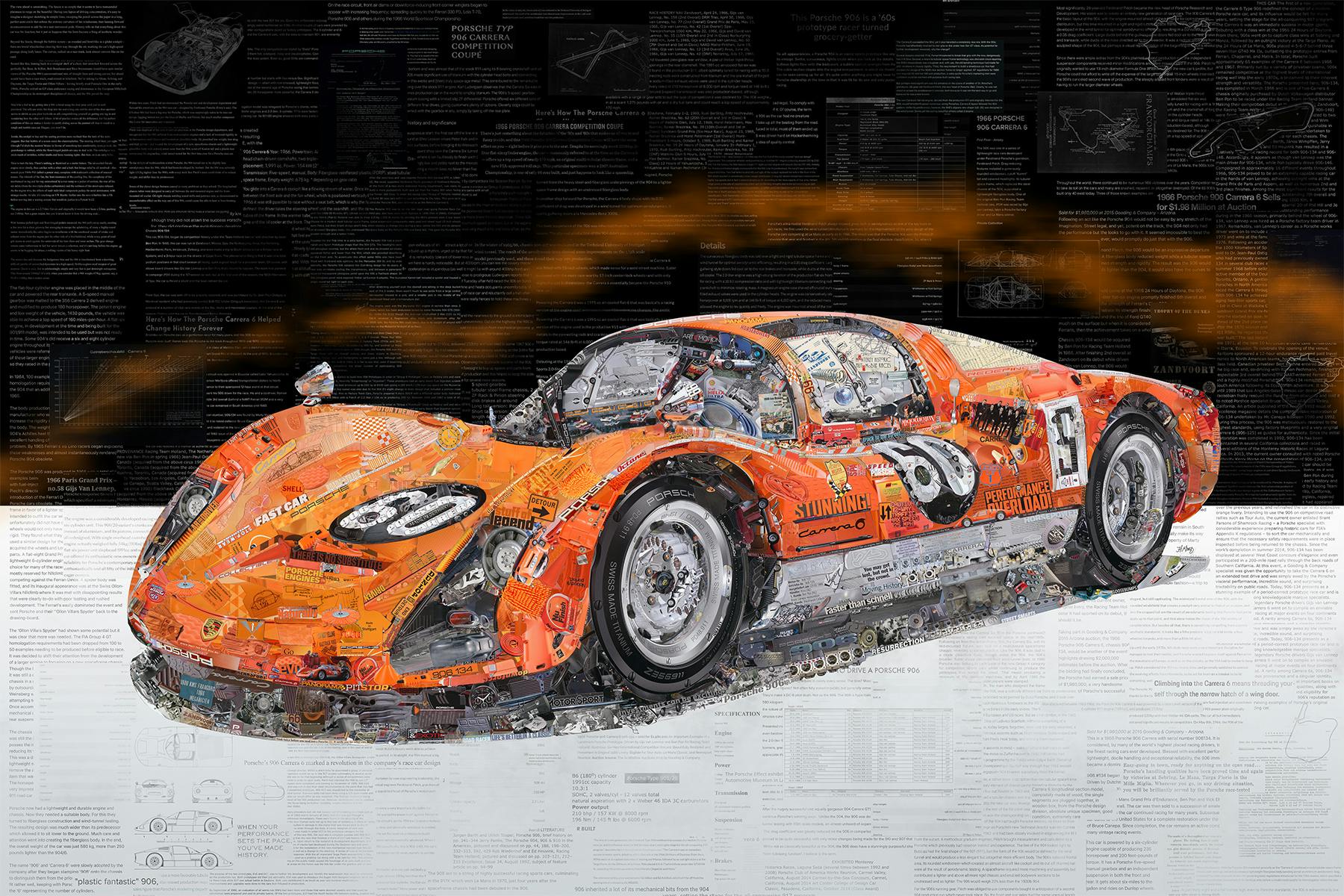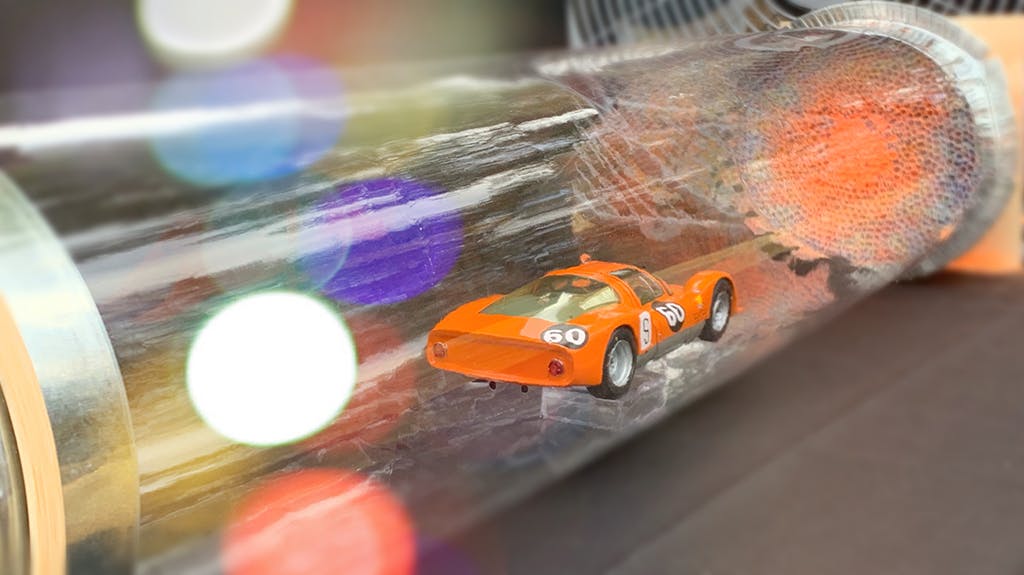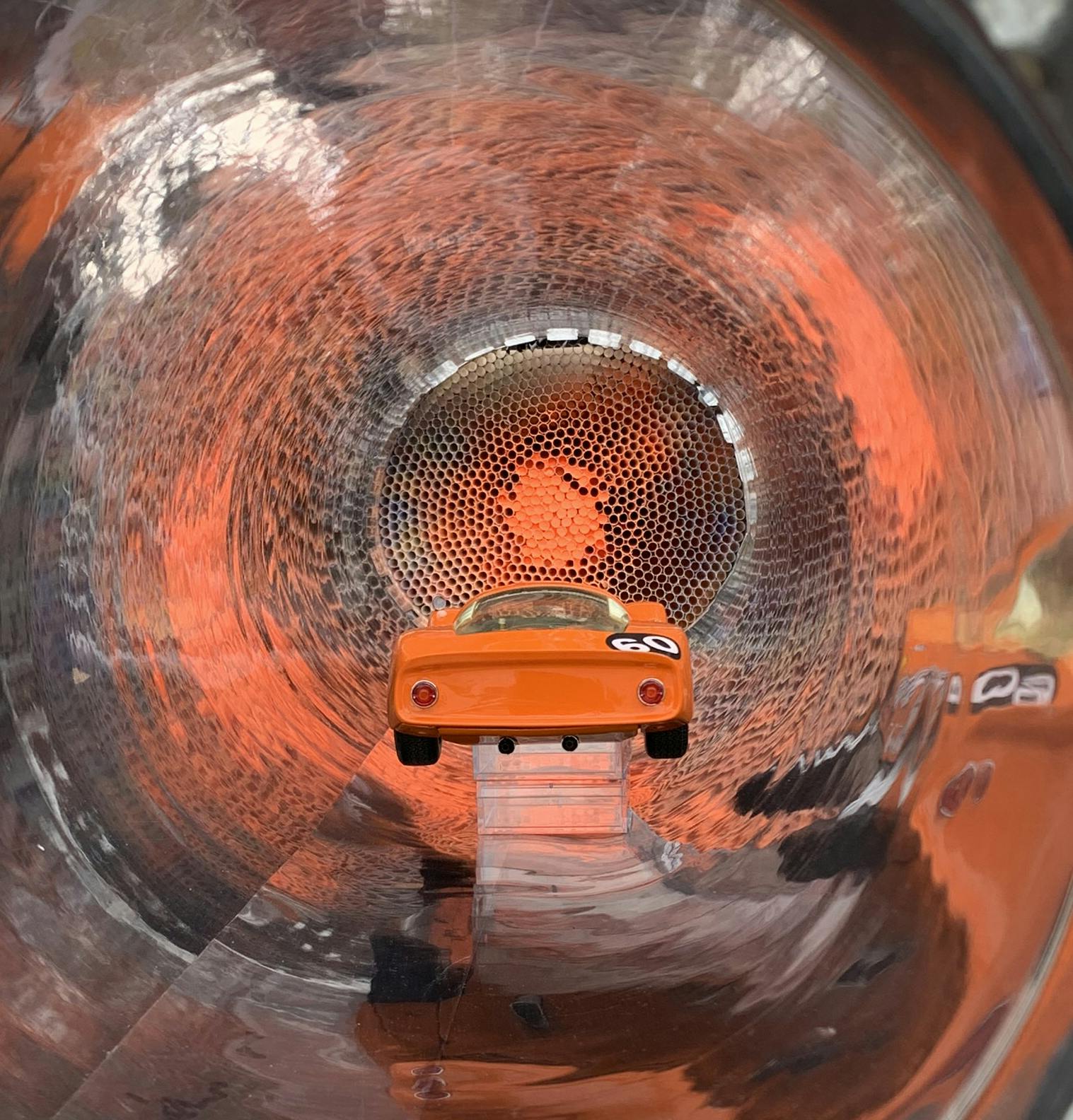These stirring car collages craft story through organized chaos
It’s rude to stare, but that’s exactly what artist Heidi Mraz wants you to do. Her car collages, made from thousands of tiny fragments of paper torn from magazines and manuals, are puzzles of information that when pieced together tell the story of the vehicle they depict.
When seen from afar, they take on the guise of a complex cubist portrait, but up close, the organized chaos of cuttings (that can be as little as 3mm) reveal themselves to be both written and visual snippets of history. This transformation, as the viewer becomes “actively engaged,” is when the magic happens, teases Mraz. It’s when her art becomes artifact, and if the rumors are true, the first look can even give you goosebumps.
“The human mind has a great capacity for making connections, so a subject may release or trigger a memory,” explains the Virginia-based art director turned automotive artist. “I’ve always had a thirst for context,” she continues. “When I’m drawn to a car I want to know more; who designed it, what its purpose was, why it has certain characteristics and who owned it. My mission is to share what I learn with others, using art as the vehicle, so that those stories live on.”
Your challenge, she adds, is to find the itsy-bitsy self-portrait that she’s hidden in each of her intricate collages, and when her current work in progress is complete, which spans the width of small parking space, it’ll make for one epic “Where’s Heidi?” game of hide-and-seek.

Before she’ll even contemplate any cut-and-paste activities, more than half of Mraz’s time is spent investigating a car’s past in official archives as well as libraries and online. She also photographs and sketches the vehicle’s form from different angles in order to study the way in which its design responds to light and shadow. These observations—particularly useful if the vehicle is black—are then used to make sure she places certain colors and shapes in the right place to give her collages their realistic sense of depth.
With a substantial paper trail giving validity to each of her automotive assemblages, it’s the human stories that are woven into them that make them particularly fascinating. “I talk to anyone who had access to the car and tend to ask questions to conjure up visceral memories,” says Mraz. “I’m always humbled when people open their homes or garages to share their stories, my life is so much richer because of this part of the artistic process.”
It was while creating a bold, and slightly haunting, collage that pays tribute to the mythical “Lady of the Lake”, a 1925 Bugatti Type 22 Brescia Roadster that was lost to the waters of Lake Maggiore for almost 75 years, that Mraz experienced a life-changing encounter. Comprising over 1500 hand-cut clues, including a scuba suit and a photograph that was taken when the car was exhumed, it took her 18 months to complete.

“There was so much myth surrounding the vehicle, so I decided to visit Switzerland,” says Mraz, who discovered the Bugatti’s story was tied to the tragic death of a young man. To establish a charitable foundation in his honor, the Bugatti was raised from the lake in 2009 and auctioned off. In 2019, the boy’s father agreed to dive to the bottom of the lake holding an ink-covered canvas Mraz had prepared for her collage so that the water could wash away some of the color, as it had washed away part of the car.
“It was a very emotional and powerful moment when I handed him the canvas,” says Mraz. “As he went under, the canvas swayed to and fro, like the dance of a prima ballerina, down, down, down until they disappeared into the depths. Mauricio, was under water for quite some time. When he finally came up and broke the surface, the clock tower chimed 10:00, which was the same time nearly 10 years to the day when the Bugatti had been raised. It was an honor to celebrate his son’s life on this day, and in my art. I hope that I have done justice to his legacy.”
It’s Mraz’s mother who highlighted her gift for storytelling when she was a little girl, and in the same way that the basic structure of a narrative consists of a beginning, middle and an end, so too do the layers of her collages—the first tells the story of the marque, the second the model, and the third, and final, the people.

Using a dot of glue or a magnet to temporarily position each piece until she’s happy with the overall composition—an unenviable task when nothing matches in color, shape, or size—Mraz then permanently fastens them with an adhesive that she feels “helps authenticate the story I’m trying to tell.” In the past this has included nails, rivets, resin, concrete, plaster and most recently, steel entomology pins. The latter was employed to fasten over 1000 paper butterflies in place “just as entomologists would do with real specimens” after Mraz chose them as her medium of choice to depict the iconic Porsche 917Ks, chassis number #022. Why? “Both the 917 and the butterfly are lightweight, and each needed to undergo a metamorphosis in order to mature,” she reveals.

It was driving the autobahn as a passenger in her father’s car at the age of seven “going faster than I knew cars could go” that ignited Mraz’s passion for automotive, and the opportunity to exhibit at a weekly cars and coffee meet two blocks from her home in Great Falls, Virginia, that inspired her to explore the art of snipping and sticking as a means of speaking to car enthusiasts in a unique and meaningful way. The result, she concludes is “part eye candy, part history and part hide-and-seek.”
Via Hagerty UK





